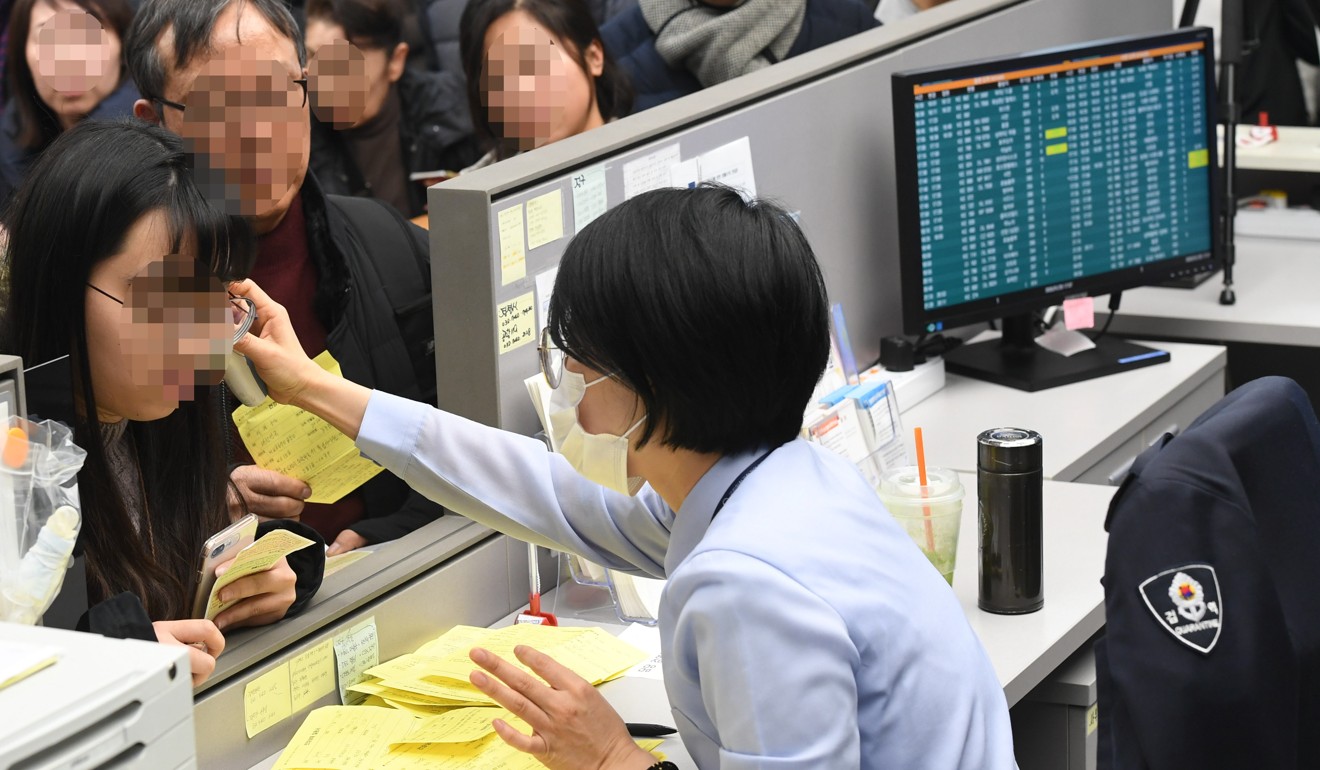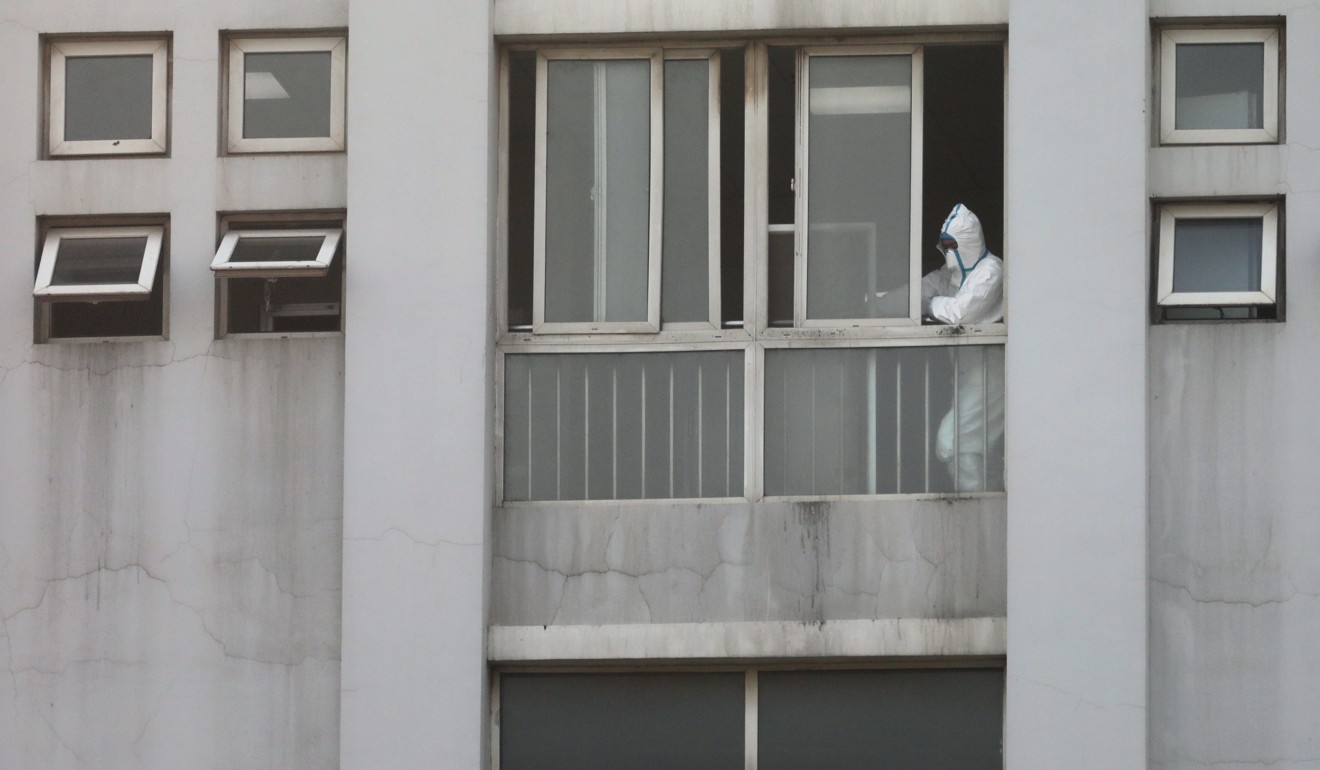
Wuhan virus kills fourth patient, infects hospital staff amid fear of ‘super-spreader’
- Priority now to stop emergence of ‘super-spreader’, with one carrier already infecting more than a dozen medical staff, specialist says
- Authorities in Wuhan, the epicentre of the virus outbreak, report a fourth death and 15 infections among hospital staff
Health authorities in the Chinese city of Wuhan said another person had died from the recently identified coronavirus infection, bringing the total to four.
It added that 15 medical staff in Wuhan had contracted the virus, confirming that it is spreading by human transmission and raising concerns that people at the most virulent stage of infection – so-called super-spreaders – could infect many others.
The World Health Organisation (WHO) said it would call an emergency meeting on Wednesday to decide whether the outbreak should be declared an international public health emergency.
LATEST: China confirms 9 dead from coronavirus and 440 infected
The new strain of coronavirus was identified this month after a mystery pneumonia started striking people in Wuhan mid-December. It is so far known to have spread to Thailand, South Korea and Japan in addition to the cases in China, in Beijing, Shanghai and the southern province of Guangdong.
The speed of the outbreak has raised fears of another epidemic on the scale of the severe acute respiratory syndrome (Sars) coronavirus, which killed more than 700 people around the world in 2002-03 after originating in China.
One of China’s top Sars experts confirmed on Monday evening that the virus could be transmitted between humans, and that it was likely to have originated from wild animals.
The total number of infections reported in Wuhan – where a seafood and animal meat market is thought to have been the centre of the outbreak – had reached 198 by Tuesday. The total number of confirmed cases in mainland China stood at 218, with five in Beijing, 14 in Guangdong, and one in Shanghai.
More suspected cases have been reported in Shanghai and Qingdao on the coast, Chengdu and Yunnan province in the southwest, and Guangxi in the country’s south.
China’s post-Sars reporting system may explain delays in announcing new cases of virus
There were 106 suspected cases in Hong Kong, which borders Guangdong.
China’s National Health Commission on Monday night upgraded the pneumonia caused by the new strain to a Class B infectious disease. However, it said it would use the stricter control measures for a Class A disease to handle the outbreak, meaning any infection nationwide must be reported within two hours and monitored.
A group of WHO experts had visited Wuhan to investigate the outbreak and meet health officials, the WHO announced on Weibo, the Chinese equivalent of Twitter, on Tuesday morning.
The WHO visit coincided with another Wuhan trip by a delegation of Chinese health experts, led by one of China’s top Sars specialists, Zhong Nanshan.
Zhong, director of the Guangzhou State Key Laboratory of Respiratory Disease, said on Monday night that the virus – identified as belonging to the same virus family as Sars – was transmitted between humans and was likely to have originated from wild animals.
Speaking on state television, Zhong said human-to-human transmission was behind one case in Wuhan and infections in two families in Guangdong province. He also said 14 medical staff had been infected by one virus carrier.

“The key to controlling the spread of the disease now is about preventing the emergence of a super-spreader [of the virus],” Zhong said.
According to Zhong, the priority for Wuhan – a city of 11 million people, more than London or New York – was to curb the spread of the virus by banning people with symptoms from leaving the city.
Reports that the virus was spreading raised particular concern with hundreds of millions of people travelling across China this week for the Lunar New Year holiday.
Wuhan itself has an international airport and is one of the country’s major rail network hubs.
“At present, there is no special cure for this new coronavirus and [we are] conducting some tests with animals,” Zhong said. “We expect the number of infected cases will increase over the Lunar New Year travel period and we need to prevent the emergence of a super-spreader of the virus.”
Zhong’s warning came as Chinese President Xi Jinping called on officials to do everything they could to stop the disease.
Wuhan virus: Hong Kong strengthens detection and response measures
State broadcaster CCTV quoted Xi as saying that the virus must be “resolutely contained” and “the safety of people’s lives and their physical health should be given top priority”.
Premier Li Keqiang also announced the creation of a national leading group to coordinate the fight against the disease.
Earlier on Monday, the WHO also warned that human-to-human transmission might have been behind the infection cases in China but it did not change its earlier advice that it did not see grounds to restrict travel to or trade with China.
The WHO China office said a team of experts was meeting officials in Wuhan to discuss the outbreak.
“The mission is part of ongoing information sharing between the government of China and the WHO,” a spokesman said.
In statements via Twitter earlier on Monday, the WHO said: “An animal source seems the most likely primary source of this novel coronavirus outbreak, with some limited human-to-human transmission occurring between close contacts.”
University of Hong Kong microbiologist Ho Pak-leung said the transmission methods and origins of the new cases on the mainland had not been disclosed.
“That means it’s likely that those cases were spread through limited human-to-human transmission, which has some connection with the movement of people,” Ho said.
How the search for the source of the Wuhan pneumonia unfolded
“Wuhan’s top travel destinations are Bangkok, Hong Kong and Tokyo. With imported cases reported in two of those three cities, it is only a matter of time for Hong Kong to have a [confirmed] case.”
Ho also welcomed the new measures unveiled by the Hong Kong government on Monday. They include health declaration forms at the airport for visitors arriving on direct flights from Wuhan, and a requirement for local doctors to report suspected cases among people who have visited Hubei – and not just Wuhan – in the last 14 days.
The Chinese Centre for Disease Control and Prevention said on Saturday that the infection was “preventable and controllable”. The virus was not Sars, the centre said on Saturday.

Confirmation of infections in other cities in China came as several countries and regions in Asia reported finding the virus in visitors since the Wuhan medical authorities first raised the alert on December 30 about what was then a mystery illness.
South Korea confirmed on Monday that a woman who had arrived from Wuhan had the virus. Two Chinese tourists in Thailand and a Chinese man working in Japan had previously been confirmed as infected. Authorities in Singapore, Vietnam, Nepal, Hong Kong and Taiwan have said they are monitoring a number of suspected cases.
No deaths have been reported overseas among the infected.
“I think that this is a situation where we’re going to see additional cases all around the world as people look for it more,” Nancy Messonnier, director of the US’ National Centre for Immunisation and Respiratory Diseases, a branch of the Centres for Disease Control and Prevention (CDC), said on Saturday.
“I think it’s highly plausible that there will be at least a case in the United States, and that’s the reason we’re moving forward so quickly with this screening,” she said, adding that the threat to the general public was “low”.
New Wuhan pneumonia cases fail to dampen China markets
In its statement, the WHO said it “is proposing studies on the novel coronavirus that can be done in China and elsewhere to better understand transmission, risk factors and where the virus is”.
“These studies take time and resources” it said, noting that some of these studies were already under way.
Messonnier, at the CDC, said: “We don’t have all the information at the level of detail that our scientists would prefer. You know CDC scientists, and we, want to see every titbit of data ourselves, and that’s not the situation we’re in right now. We are in more of a waiting mode, waiting to see what our colleagues from China are releasing.”

The health authority for Shenzhen in the southern province of Guangdong said its first confirmed case was a 66-year-old man. He had visited relatives in Wuhan at the end of last month and developed fever and fatigue on January 3. He went to a doctor in Shenzhen the next day, then was admitted to hospital, where he was quarantined, on January 11.
His condition was stable and the authority was monitoring people who had been in close contact with him, the authority said.
The Zhejiang health authority said that the five patients it had reported as showing symptoms had recently visited Wuhan.
In Malaysia, authorities were on “high alert” for the disease, with response teams at all international arrival entry points.
Additional reporting by Lawrence Chung in Taipei and Victor Ting


